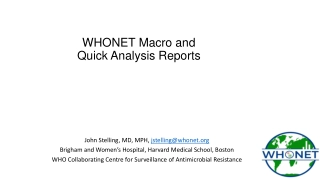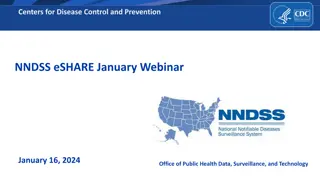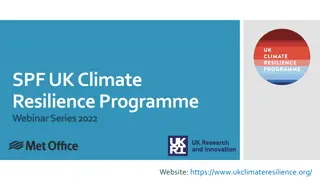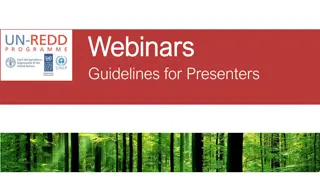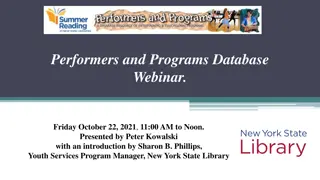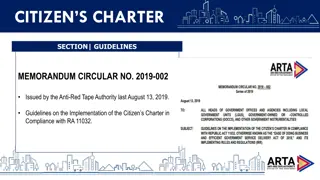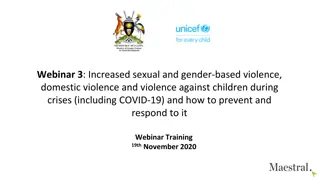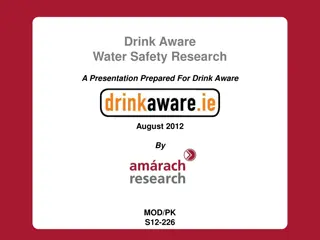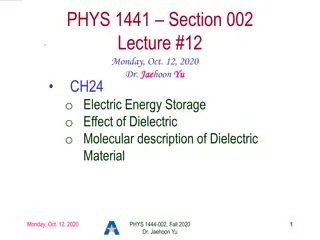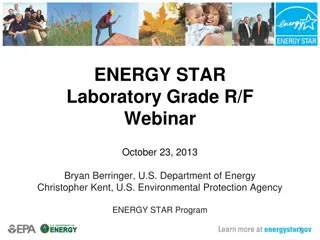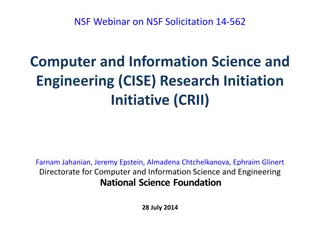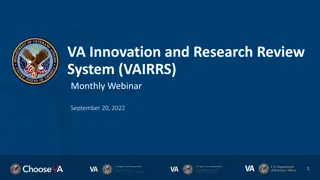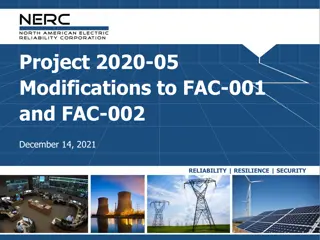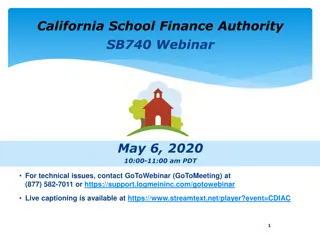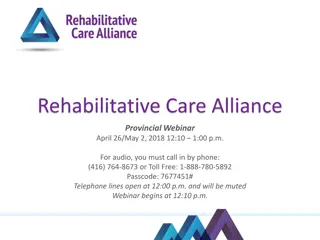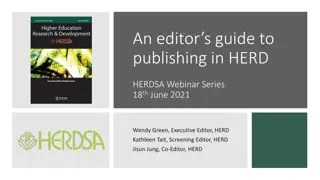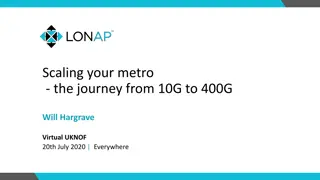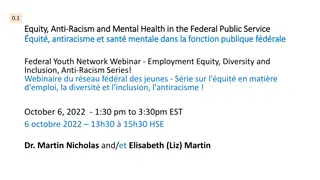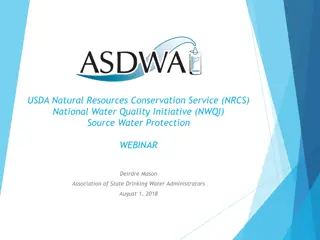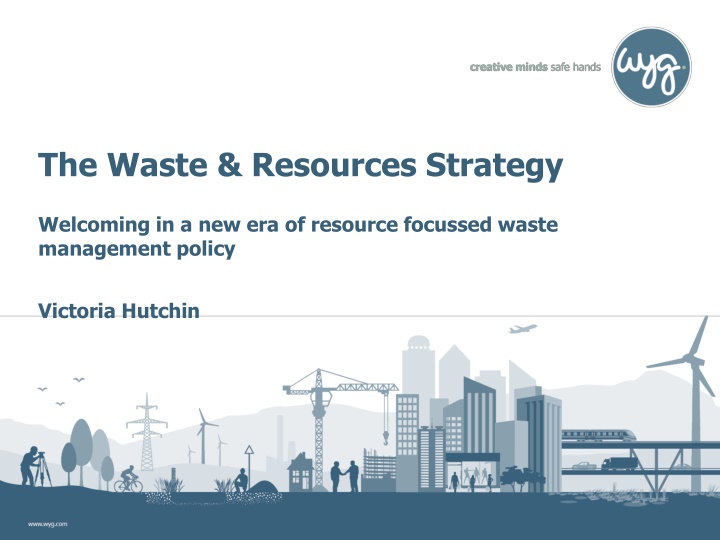
Resource-Focused Waste Management Strategy Insights
Discover the innovative waste management strategies in Victoria Hutchin's waste and resources strategy, along with key principles and milestones aiming for sustainability and efficiency. Learn about WYG, a professional services firm promoting environmental responsibility.
Uploaded on | 0 Views
Download Presentation

Please find below an Image/Link to download the presentation.
The content on the website is provided AS IS for your information and personal use only. It may not be sold, licensed, or shared on other websites without obtaining consent from the author. If you encounter any issues during the download, it is possible that the publisher has removed the file from their server.
You are allowed to download the files provided on this website for personal or commercial use, subject to the condition that they are used lawfully. All files are the property of their respective owners.
The content on the website is provided AS IS for your information and personal use only. It may not be sold, licensed, or shared on other websites without obtaining consent from the author.
E N D
Presentation Transcript
The Waste & Resources Strategy Welcoming in a new era of resource focussed waste management policy Victoria Hutchin
Welcome Associate Waste & Resource Management Consultant Top 3 in 35 under 35 Awards 2018 12 years of sector experience Chartered Waste Manager and Chartered Environmentalist 1
Who are WYG? WYG is an award-winning professional services firm operating from more than 50 locations across the UK, Europe, Africa and Asia We serve our clients through six business streams: International Development Infrastructure & Built Environment Programme & Project Management Surveying & Asset Management Environmental Waste and Resource Management Planning & Transport https://www.wyg.com/consulting/environmental 2
Starting point Recycling rate 44.9% (England) 90% ( 700m) of cost of household recycling collections and processing covered by Council tax 10% ( 73m) covered by producers (LARAC) Phil Conran Chair of advisory committee on packaging Currently not about long-term sustainability Focus on meeting that years target 3
Key Strategy Principles 1. To work towards making all packaging recyclable, reusable or compostable by 2025 2. Zero food waste to landfill by 2030 3. Eliminating avoidable plastic waste by 2042 4. Doubling resource productivity by 2050 5. Eliminating avoidable waste by 2050 The beginning of the end of the buy, consume, throwaway linear ethos 4
Key Milestones Source: Our Waste, Our Resources: A Strategy for England, December 2018 5
Challenging status quo EPR and DRS help guarantee waste products have a value at the end of life Quantity and quality of materials available and stimulate demand in secondary market Recycling targets for packaging Tax on plastic packaging with <30% recycled content Source: Our Waste, Our Resources: A Strategy for England, December 2018 Potential future Tax on incineration 6
Material Consistency Source: A Framework for greater consistency in household recycling in England, WRAP Purpose: Deliver high quality 7
Circular Economy Package 70% 65% by June 2035 Combined Recycling and Composting Rate % 60% 55% by September 2025 50% 50% by May 2020 45% 2016 Performance 40% 30% 20% 10% 0% 2015 2020 2025 2030 2035 2040 8
Material Quality Reform Packaging Waste Regulations Easier to recycle Consult on exports Easier for consumers to know what to recycle Review Packaging (Essential Requirements) Regulations 2015 by the end of 2020 When is separate collection necessary? Role of Communications Quality standards for compost and digestate fully adopted 9
LA Support New Statutory responsibilities subject to assessment of new burdens Increase revenue for LAs Government to work with urban authorities to improve recycling Pilots of co-collection of commercial & domestic waste Zoned collections of commercial & domestic waste Align National Planning Policy with Strategy Two-tier authorities Better sharing of assets Agreed service standards Review of cost sharing inc. recycling credits 10
How might the funding work? Income from EPR More polluting / less recyclable products = higher producer cost EPR = incentive to improve packaging Potentially LESS INCOME PER ITEM as products improved BUT Potentially MORE ITEMS as more products are recyclable EPR + Min recycled content Creates demand for secondary materials 11
Deposit Return Schemes Deposit at point of purchase, refunded when items are returned Public awareness is relatively low 66% (RECOUP) 59% think deposit will be 10p per container or more (RECOUP) DRS income fed back into the recycling system Align with Scotland and other devolved nations On-the-go or more extensive? 12
Impact of DRS Potential reduction in litter? Figures as high as 90% Collective savings modelled to be as high as 35m a year Zero Waste Scotland Savings 50m landfill tax and litter reduction Public perception is good Will the impact be greater in cities where DRS will be more accessible? 13
Impact of DRS Potential reduction in kerbside material & income Certain costs are fixed Minimum collection resource level Admin, management and overhead Assets and infrastructure Contractual terms What will this mean for local recycling rates? And will this matter? 14
Extended Producer Responsibility Recover full net cost Implemented by 2023 Minimum recycled content 30% for plastic bottles (Tax by 2022) Lower fees for products easier to recycle Increase buyer awareness and influence purchasing decisions Drive packaging innovation and gradually remove less recyclable / resource efficient products from market 15
Waste Infrastructure Waste Infrastructure Delivery Programme 3 billion by 2042 on developing new waste infrastructure Increasing capacity Increasing investor confidence Improving UK competitiveness in this market Process more waste at home 1. Providing a large & stable supply of recyclable waste materials 2. Increasing the quality of the waste materials to be recycled 3. Improving demand for recycled materials & market stability 4. Levelling the playing field for UK minimising illegal exports 16
HWRCs Minimum standards at HWRCs Reuse at HWRCs Amend Waste Regulations for HWRCs Reuse guidance Targets for LAs set by Government Requirements for LAs to set own targets Reporting to encourage greater provision of reuse facilities 17
Waste Minimisation Implementation of food labelling guidance (developed 2017) Food redistribution before it becomes waste Amounts to 250 million meals per annum 15 million pilot scheme to be launched in 2019 Appointment of Food Surplus and Waste Champion 10m collaboration fund E.g. alternative commercial outlets for non-specification goods OR Shortened supply chains 18
Prevention of Crime Mandating digital recording of waste movements subject to consultation Easier for HH to understand & comply with duty of care Intelligence sharing police, local authorities, HMRC & industry Fly-tipping toolkit = web-based tools Changes to waste exemptions Possible tax registration checks Creation of joint unit for waste crime 19
victoria.hutchin@wyg.com If you would like any more information, please visit www.wyg.com

